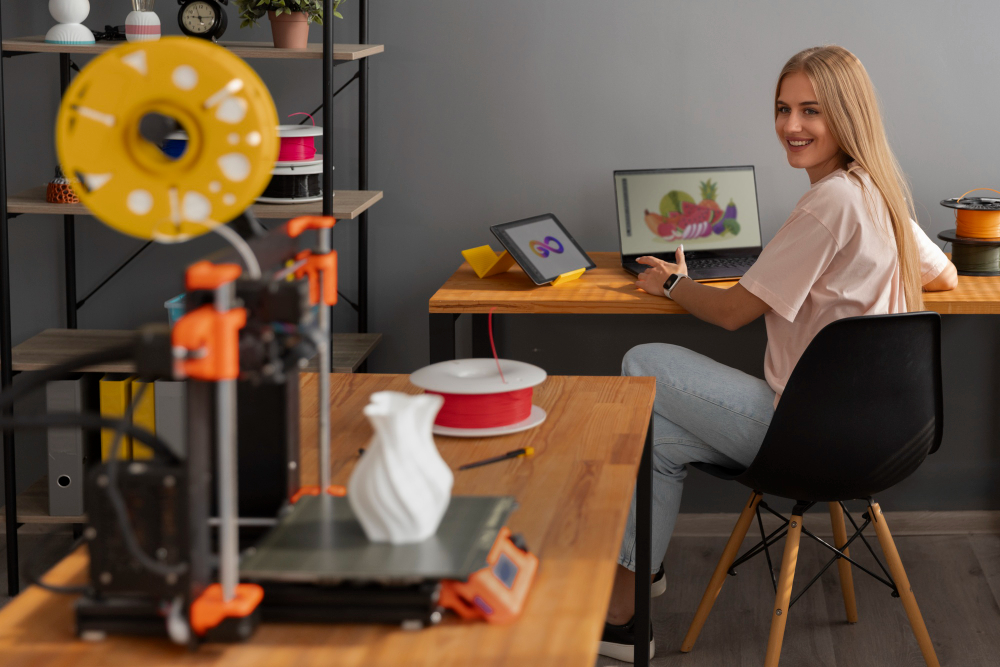How to implement the 4 Cs of a 3d printing makerspace?




Because our software manages 3D printers, users, print files, and print queues, we are in makerspaces a lot. We get to see students' projects, and we get to hear about the goals, challenges, and successes of the makerspace staff.
Following are ways to implement the 4 Cs of a makerspace: creativity, critical thinking, collaboration, and communication.
A large tenet of a successful makerspace is enabling creativity. It's also an aspect that is very hard to quantify; in fact, we've had makerspace teachers tell us that judging creativity is the most difficult part of their work.
But the main thing is to encourage experimentation. A makerspace is where students can learn it's ok to fail. Trying new ideas will necessarily lead to making mistakes, and that's part of the learning process.
To stimulate creativity, you will need to supply a variety of resources. One student will see a sheet of cardboard as an airplane just waiting to happen. Another, tinkering with a 3D printer, will discover how to create hinges on a one-piece print.
It's that diversity of tools and equipment that allows creativity to flourish. There’s certainly no standard requirement for a makerspace, but we often see 3D printers, laser cutters, and CNC machines, combined with hand tools, wood shop equipment, and supplies of all types.
And flexible space helps, too. Sometimes students might need a large table for working together; other times a quiet corner to drill down on digital design. Ideally, create adaptable work areas that you or your students can reconfigure as necessary.
Integrate problem-solving challenges into your makerspace activities. You might have participants create projects with minimum distance or weight requirements - for example, catapults that can launch items a certain distance, or bridges that can bear a certain weight.
Some STEM teachers make iterations a mandatory step in each project. This encourages students to pause and reflect on what works, what doesn't, and how improvements can be made.
This is an excellent time for students to learn research skills, too. They can learn to judge the merits of the information they find, and make informed decisions based on that information.
Team projects are common in a makerspace, and students learn the value of sharing ideas and combining skills. Develop projects that require students to collaborate: we've seen some really neat ones where even at a young age, students were working together to create an interlocking object.
And teaching students to give and accept peer critiques will help them throughout their whole life. Find a way to support them in a system of constructive feedback.
Collaboration is more than just between students, too. When teachers outside the makerspace understand how many resources are available, they can build projects into their curriculum. This interdisciplinary approach leads to a deeper and better learning experience for students.
Give your students plenty of opportunity to present their projects. Some schools host a project fair, so parents and members of the community can come and learn from the students' experiences.
Encourage students to document and share processes. This reinforces their own learning, and helps them share knowledge too. It can be as simple as shooting a video on their phone, that gives a step-by-step walkthrough of uploading print files, setting the 3D printer going, and monitoring the 3D printer camera.
And of course, communication is not just a one-way street. Make sure you have feedback mechanisms built in, so students are heard and taken into account in your decision-making process.

Learn more about 3DPrinterOS - the most trusted 3D printing management software for Higher Education, Enterprises and OEMs. Fill out this form to get in touch with our experts.
Manage the workflow and permissions for your users
Share files and 3D printers to groups of users
Control your 3D printer fleet through a browser
Cloud slicer and toolpath viewer
Book your personalized assessment now and get your free trial.